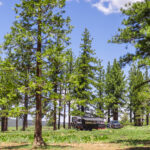
MENUMENU
TALK TO AN EXPERT
Special Hours: 7AM – 6PM PST
TALK TO AN EXPERT
Special Hours: 7AM – 6PM PST
This is a comparison between one Battle Born LiFePO4 battery and two 6V GC2 batteries connected in series.
A common battery configuration in RVs and golf carts involves the use of multiple 6 V GC2-style batteries connected in series to form 12 V or 24 V systems. In this post, we examine the differences in discharge and charging profiles between a single 100Ah 12V LiFePO4 Deep Cycle Battery pack and two 100Ah 12V GC2 LiFePO4 Deep Cycle Batteries connected in series (see photograph below). The BB10012 weighs 29lb and the two GC2s weigh a combined 150 lbs.
Figure 1: Photograph of comparison test setup
Two brand new Duracell Ultra high capacity 6 V batteries (Part number SLIGC115) were purchased from Batteries And Bulbs in Reno, Nevada. These batteries have a capacity rating of 230 Ah. The batteries were fully charged by applying a 14.4 V charging voltage until the charging current fell below 1 Amp. After settling for 10 minutes, the batteries were discharged at a constant current until the battery voltages fell below 11.8 V. The discharge current among the tests varied between 10 A and 50 A. The results of the tests for 3 discharge currents are shown below.
Figure 2: Voltage discharge curve comparisons for three discharge currents.
What is clear from the curves in Figure 2 is that the relative performance is highly sensitive to the discharge rate of the batteries. At a 50 A discharge rate, the BB10012 can sustain above the 11.8 V cutoff for almost 2 hours, whereas the GC2 batteries cutout in less than an hour. At the lowest discharge rate, the BB10012 can deliver 10 A for around 9.5 hours, whereas the GC2 batteries last for over almost 12 hours.
Figure 3, below, shows the cumulative delivered charge and energy over the discharge curves for all 3 discharge current tests. What is immediately clear from the figure is the known Peukert effect in lead acid batteries. The usable capacity drops from 120 Ah at 10 A to 40 Ah at 50 A for the GC2 batteries – despite their capacity rating of 230 Ah. By contrast, the BB10012 pack remains within several percent of 100 Ah, independent of the discharge rate. The slight drop in capacity with current is entirely due to the ohmic voltage drop during discharge.
Figure 3: Discharge curves: Voltage vs Capacity
Finally, Figure 4 below shows the head-to-head comparison of the charging profiles. In this test, a charging current of 40 A was used with a bulk and absorption voltage of 14.4 V. Absorption was allowed to continue until the charging current fell below 3 Amps. What is evident from the figure is that the LiFePO4 BB10012 pack charges completely in less than half the time as the GC2s (2.5 hours compared to 5 hours), even with the identical charging parameters. The reasoning is that internal resistance of li-ion batteries is much lower, and so the high-current bulk charging phase can continue for longer. Therefore, less time is needed for absorption.
Figure 4: Charging profile comparison
Shop Best Sellers
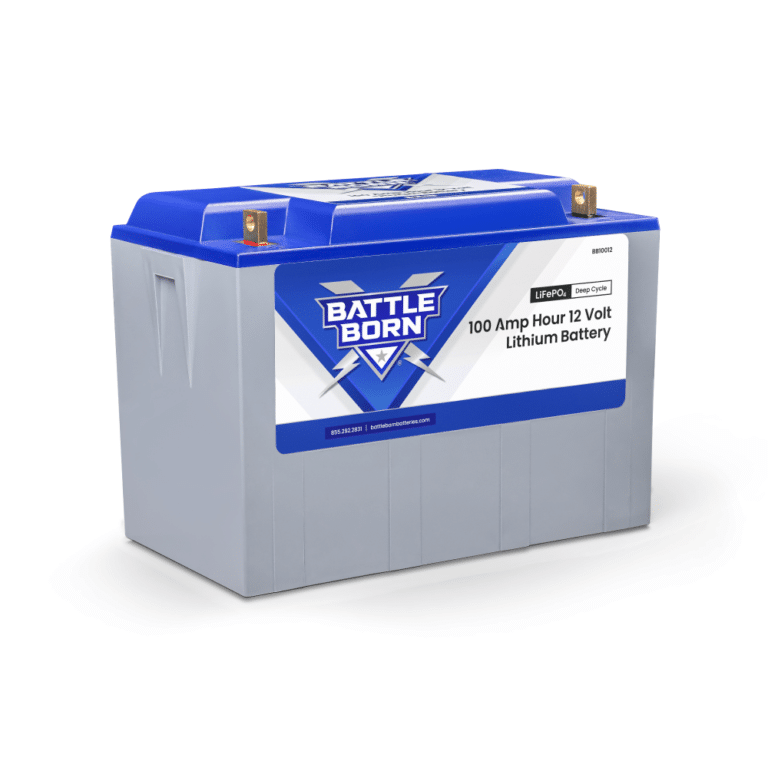
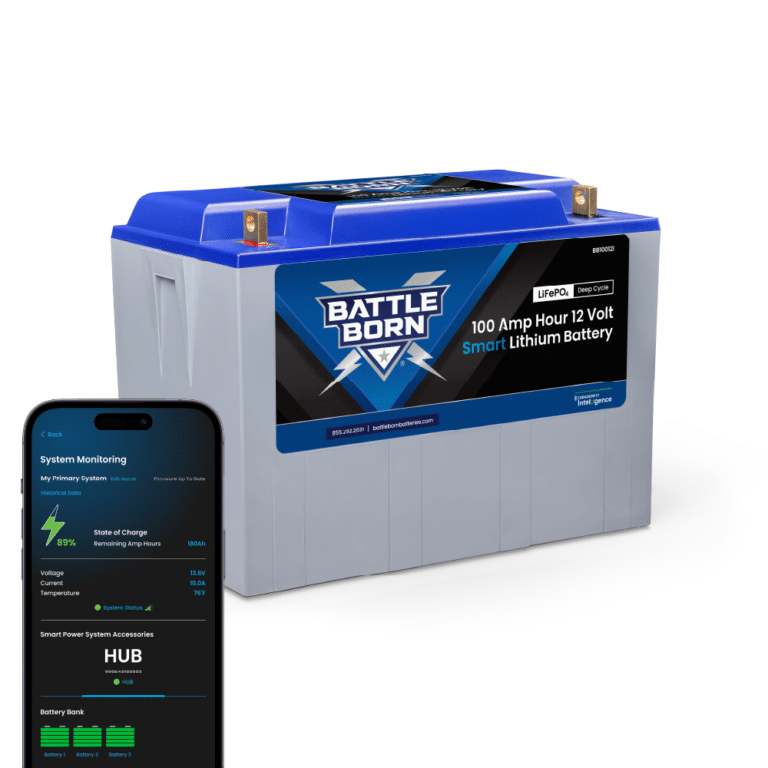
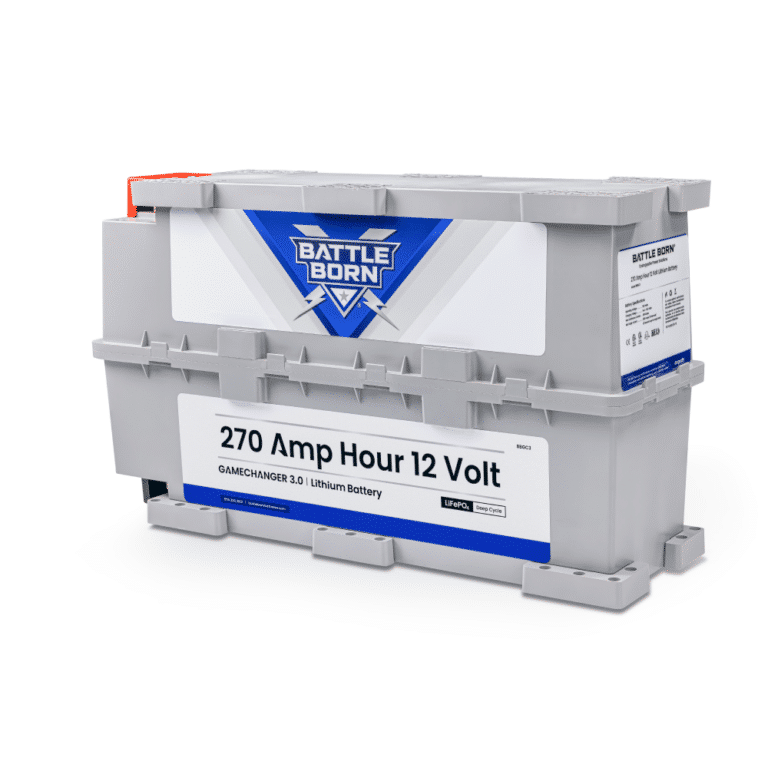
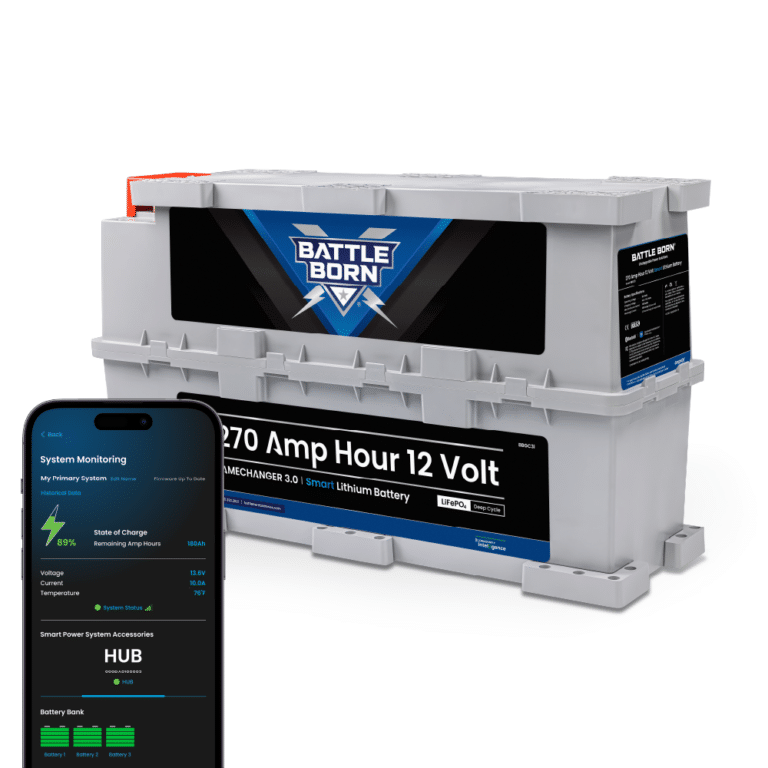
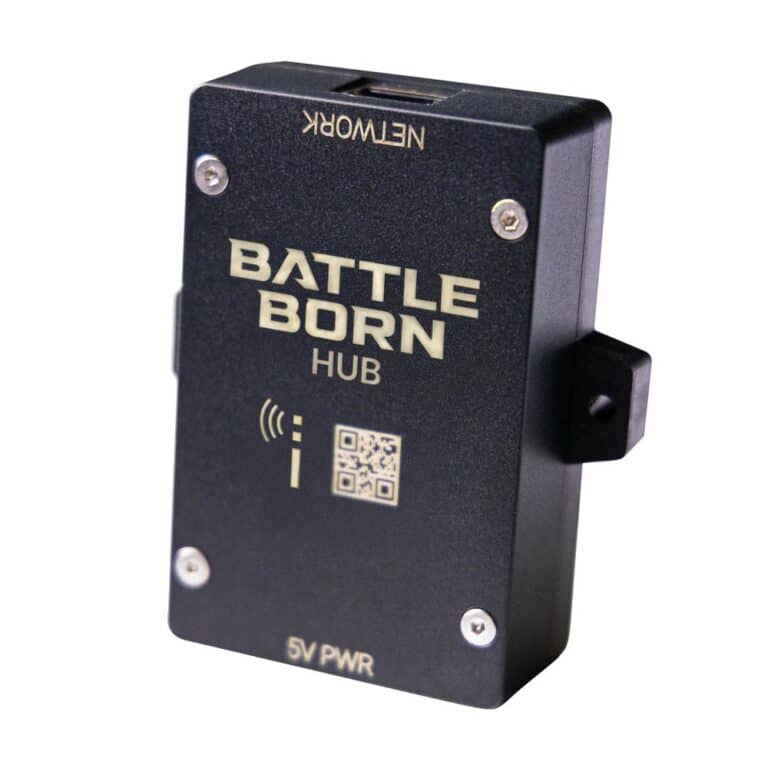
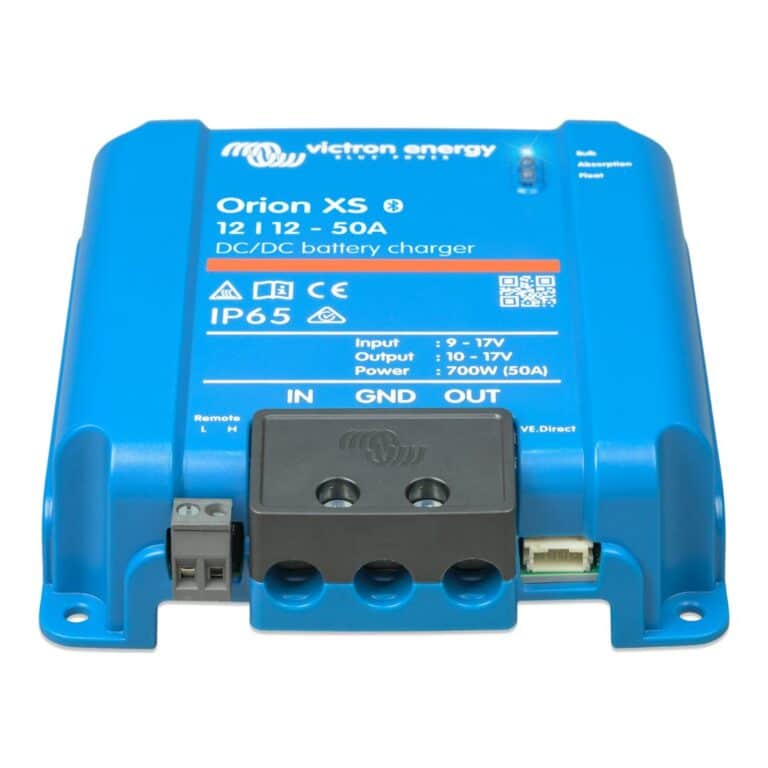
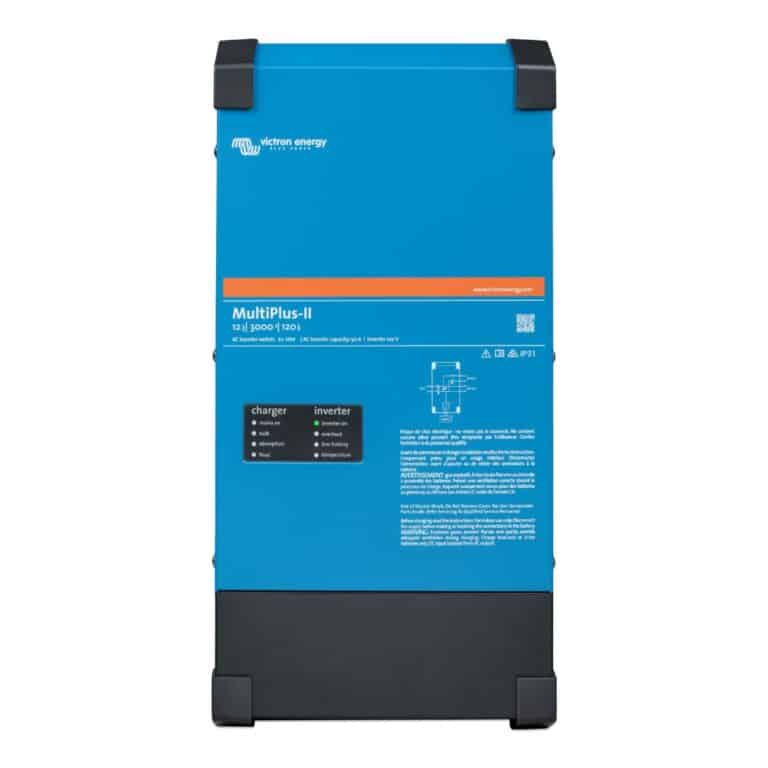

Ask a technical specialist now at 855.292.2831
Stay in the Know
15 thoughts on “Comparison Between Battle Born LiFePO4 and 6V GC2 Batteries in Series”
I found the same thing when comparing two 12V Lead Acid EverMax batteries versus 2 BattleBorn to power a diesel fired RV furnace at a constant 4 amp load. The lead acid batteries actually lasted longer than the BattleBorn batteries. The difference came in when recharging them. The BattleBorns could be brought right back to full charge in half the time of the lead acid! Tha BattleBorn batteries are also easier to handle at half the weight.
I have been struggling with the battery replacement decision for my VW Eurovan for over a month. Use the same 12V deep cycle battery I had before (now $335), use 2-6V batteries (with some modification in the battery space), or take the dive and go lithium.
The advantages of lithium are legendary: no outgassing (but you get that with AGM batteries), lighter (but it is in a van…), but best of all, the lithium can be discharged most of the way and survive. This is a huge plus for an RV, with an operator who had discharged a battery to exhaustion before (could that be the reason I have to replace my deep cycle battery after 3 years?).
But the biggest obstacle was the perception that I would get ‘so much more power’ from a set of 2-6V batteries. The promise of 225Ah is very seductive. Plus the cost (at Costco) is much less.
This study, showing that the 100Ah BattleBorn actually delivers as much or more energy, really pushed me over the edge. The day I found this page is the day I placed my order for the BattleBorn. Time will tell how good a decision this is, but I can tell you that I will not be worried about power for my van (adding solar to the roof is a big plus).
Thank you BattleBorn for making this generation of technology available, with US manufacturing…
Can someone explain Fig 4? The description says the BB’s charge in less than half the time, yet the figure shows the GC2s at full charge at around 2 hours. Seems either the curves or description is wrong. Thanks
Hi Stan,
The Two GC2 batteries are not at a full charge after 2.5 hours, they have just hit the set voltage and need another 2.5 hours in order to be full. You will notice that the black line ends after 2.5 hours and this indicates that the battle born battery is at a full SOC. One of the great benefits of our lithium batteries is that the absorption time is only 20-30 minutes per battery, allowing for a much quicker charge than the lead acid.
Thanks,
Dianne,
What model charger was used to accomplish the 2.5h charge in Fig 4? Is charging the BattleBorn in this manner considered best practice? Also will it cause the battery harm or damage long term? Thank you.
Michael,
This test was done on an industrial grade cycler not a typical or common charger that is available to the public. Charging our batteries at .5c(50 amps for a 100ah battery)or lower is totally acceptable and is considered best practice and you will definitely not cause any long term harm or damaging when charging with this amperage.
Thanks,
As for the lead acid battery, another thing to consider is that you should never charge a lead acid battery faster than 15% of the battery capacity in a real world application (Fig 4 lab test charge rate understood). So in the case of the (2) 230AH 6v GC2 batteries the charge rate should never exceed 34 amps. So taking the example shown in figure 4 into account (Lab test not real world) you will be charging the lead acid battery in real world applications at a slower rate than you could charge the LiFePO4 battery (0.5C as mentioned by Dianne). 230AH lead acid charge rate = 34 amps max and 100AH LiFePO4 charge rate 50amps max. Not only does the LiFePO4 have a lower resistance and shorter absorption time. It can also take more amps which further explains the faster charge time.
it’s 25% of the battery capacity (40 amps is well within that), not 15%. The fact of the matter is, the battery will decide. That is why it’s called acceptance rate. That being said, the FLA will still take as long to reach full charge. It’s not really the Bulk Phase that limits it but the absorption.
Thanks, Dianne! I had not noticed the end of the black line in Fig 4. Makes sense.
I UNDERSTAND THE BATTERIES DO NOT OPERATE WELL IN THE COLD. AT WHAT TEMPERATURE IS THIS AN ISSUE AND IS THERE A MODEL THE SHOWS PERFORMANCE AT A POINT WHERE THIS IS A PROBLEM. IF A FULLY CHARGED BATTERY IS SUBJECT TO UNDESIRABLE TEMPERATURES BUT NOT USED, WILL THIS HARM THE BATTERY FOR FUTURE USE.
Hey Mark, thanks so much for your response. At 25 degrees Fahrenheit it will stop accepting a charge but will continue to discharge until -4 degrees Fahrenheit. If you have any other questions, feel free to give us a call at 855-292-2831 or send an email to [email protected].
I currently have 6 each 6 Volt, 215 AH Lead Acid Batteries in my conversion van, How many 100AH Battleborn Batteries would be required to replace this setup?
Hi JD, thanks for reaching out! Our team estimates about 3 to 4 of our Battle Born Batteries to replace your setup, but please give our sales and tech team a call at 855-292-2831 with more information and we can confirm this to get your system squared away. Thanks again and have a great holiday season!
What is the solution for high summer temperatures?
Our problem here in the southwest with LiFePO4 batteries is high temps, not low. We routinely have three months out of the year with over 100 degree temps.
I thought of adding a duct from inside the coach to the RV battery compartment and pulling air conditioned air from inside. But then I would have to run the A/C system 24/7 during the summer months and that’s not possible.
Thanks
Hi Vito, if you give our tech and sales team a call at 855-292-2831 they can help give you great advice and offer plenty of resources to deal with high temperatures in summer months. Let us know if you have any additional questions about your setup and have a great rest of your day.